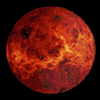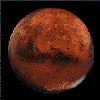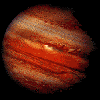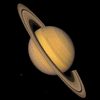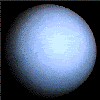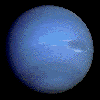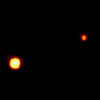Mercury
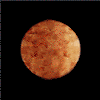
Mass (kg): 3.3 x 10 23
Diameter (km): 4879.4
Mean density (kg/m 3 ): 5420
Escape velocity (m/s): 4300
Average distance from Sun: 0.387 AU (57,909,175 km)
Rotation period (length of day in Earth days): 58.65
Revolution period (length of year in Earth days): 87.97
Obliquity (tilt of axis degrees): 0
Orbit inclination (degrees): 7
Orbit eccentricity (deviation from circular): 0.206
Mean surface temperature (K): 452 (179 o C)
Maximum surface temperature (K): 700 (427 o C)
Minimum surface temperature (K): 100 (-173 o C)
Satellites: None
Visual geometric albedo: (reflectivity): 0.12
Largest known surface feature: Caloris Basin (1350 km diameter)
Atmospheric components: trace amounts of hydrogen (H) and helium (He)
Surface materials: basaltic and anorthositic rocks and regolith
